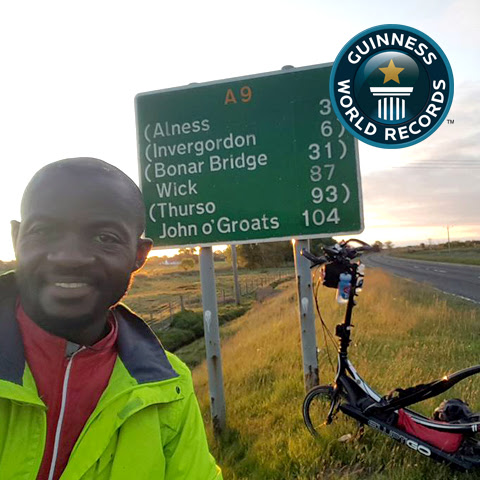Article By Idai Makaya (20 January 2017):
I recently discussed the issue of keeping the hands warm on long rides with a fellow rider in the ElliptiGO Ultra-Endurance Team and shared a few of the tips which I have found to really work well for me on bitterly cold rides (such as this one – during which our water bottles froze within minutes, but our hands held out really well). Here’s a list of my favourite techniques for keeping the hands and feet comfortable…

I have similar weaknesses to you in the hands and feet when it’s very cold – but mainly the hands. There are 3 things you can do to help.
One is to use better gloves. Often cycling gloves don’t work as well as ordinary gloves (such as outoor gloves for hiking etc) – especially if you have bigger hands. So make sure the gloves you ride in are as big as possible, to stop them restricting bloodflow to the hands. Sam thing for shoes – not too close-fitting or tight.
That is sometimes where cycling gloves tend to fail, they are often designed to be a tight fit. I often get the best results on long rides by wearing two pairs of loose gloves. Layering is everything in cold weather, so two layers of gloves tend to work better than one layer (as long as there is no tightness). If gloves are tight your hands can start to suffer within minutes of entering a cold environment.
Another thing you can do is actually condition the hands in cold water. The eaiest way to do this – outside of taking a cold bath, is to place your hands into cold water in and see how long you can tolerate it. A convenient way is to run the cold water first whenever you run a bath, and place your hands into it for as long as you can tolerate. Then run the hot water and have your bath at whatever temperature you find comfortable. If you shower rather than use a bath, then you may have to just run cold water into your bathroom sink and dip your hands in for as long as you can.
This conditioning technique eventually stops the reflexive vasoconstriction which most people with sensitive hands have. In other words, it reconditions the nervous system not to dramatically close off bloodflow to the hands every time they are colder than the core of the body. In very cold environments the body tends to pool blood around the vital organs and focuses on keeping those at the standard body temperature. This can lead to extremities (like the hands and feet) suffering from closed off circulation, which gives incredible discomfort and allows the hands to freeze even more.
The third technique I’d like to share is also very effective, although many people are not aware of it. This technique is really simple. Layer your body with a number of weatherproof tops and jackets, so that your core temperature is never under stress when riding in very cold weather. This technique actually tricks the nervous system into keeping the bloodflow going to the extremities because it only cuts off peripheral circulation if there’s a struggle to maintain the core body temperature.
It is a really clever approach and experienced road cyclists are good at this layering approach (they don’t warm up as fast as we do on the ElliptiGO and at lower efforts will find it harder to keep the core body temperature up, compared to the average ElliptiGO rider). It turns out that just having the main core of your body really hot means that your nervous system does not feel the need to boost the temperature of the internal organs by closing off bloodflow to the extremities – and you are then able to ride in very cold weather with less stress and discomfort in the hands and feet.
Other things to look out for when riding in extremely low temperatures are:
- Leaning too heavily on the hands – because that in itself restricts bloodflow (just like tight gloves do).
- Keeping the feet planted in one spot all the time (which again causes restricted bloodflow in the feet). Here is an article which explains the specific long-distance riding technique on the ElliptiGO, to keep the feet more comforable. My approach to this is a lot like road cycling using cycling shoes with cleats (and pulling up on the return stroke) but on the ElliptiGO it has to be much more subtle…
I hope that’s useful information….
